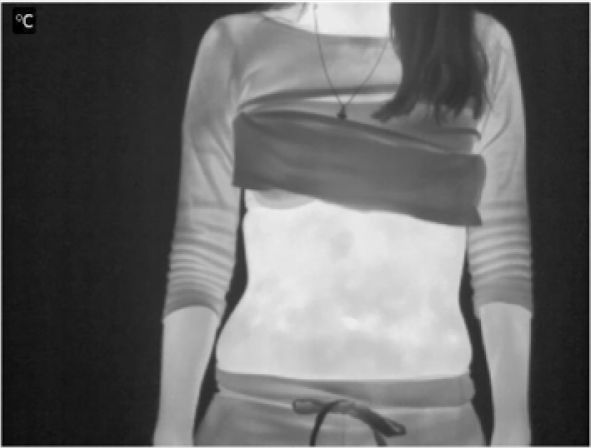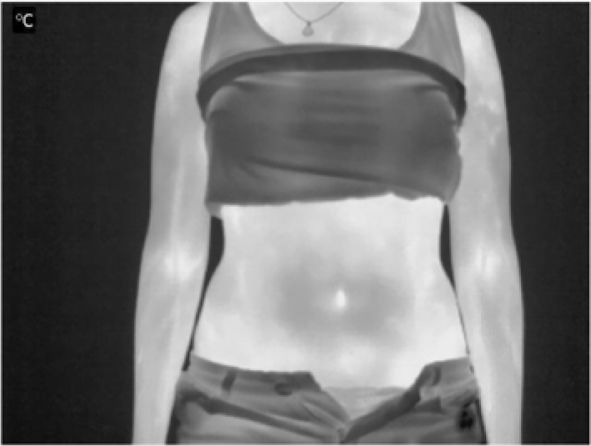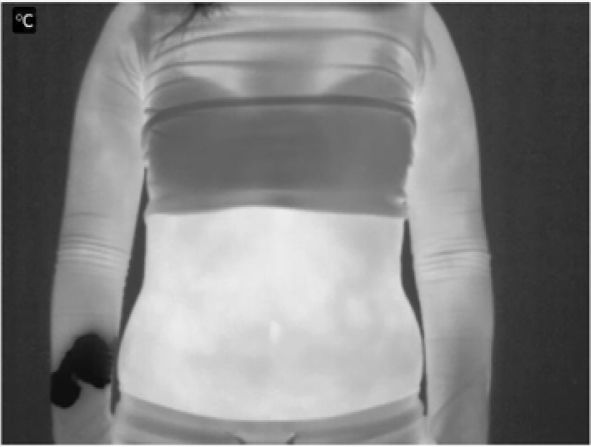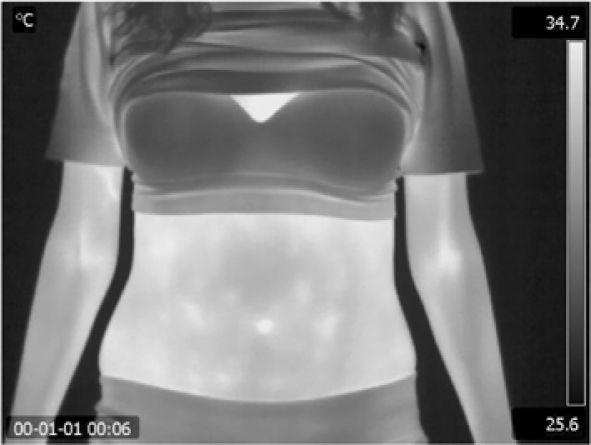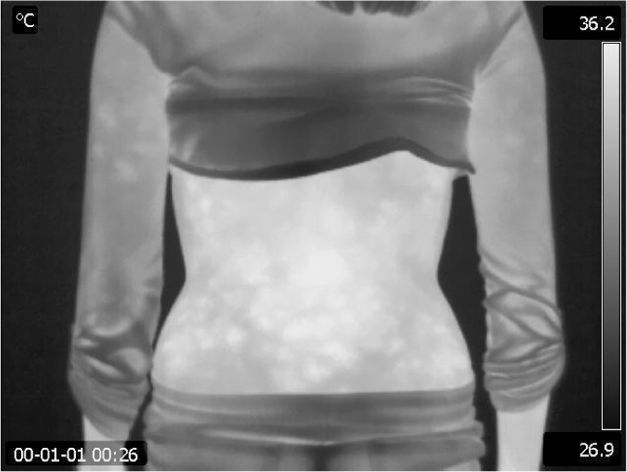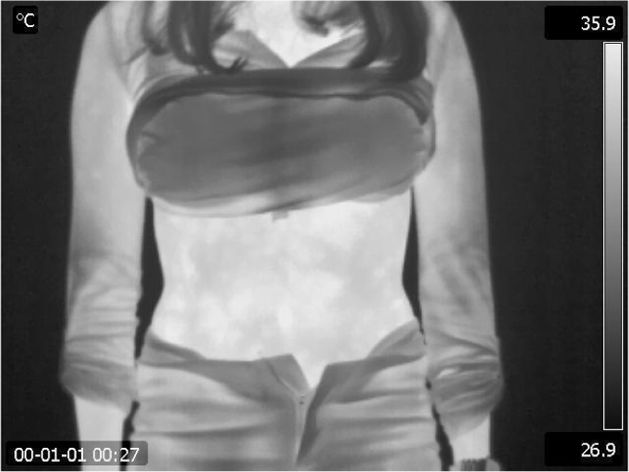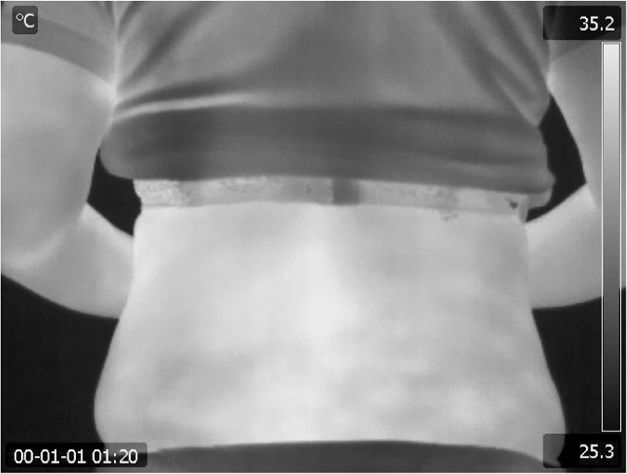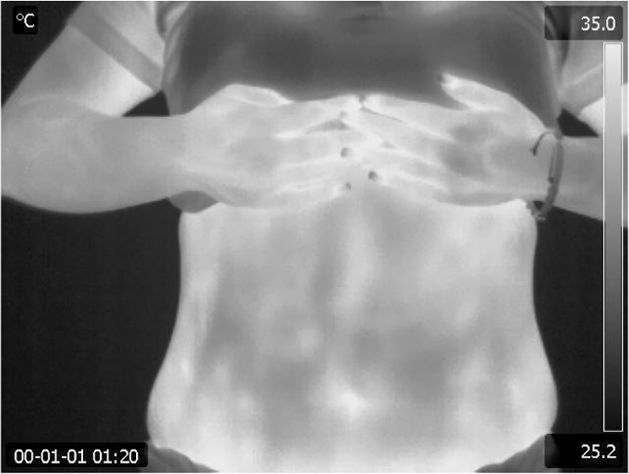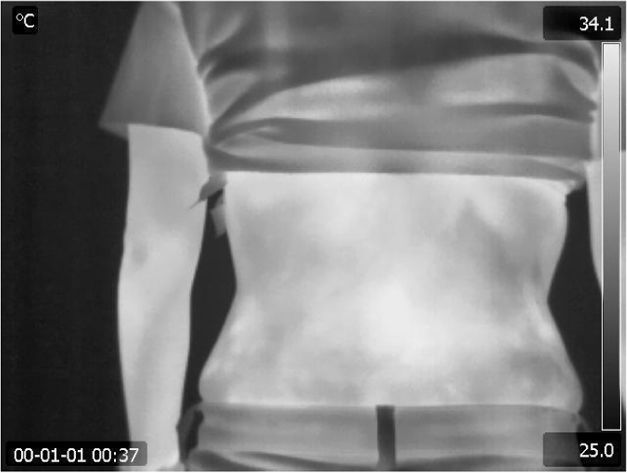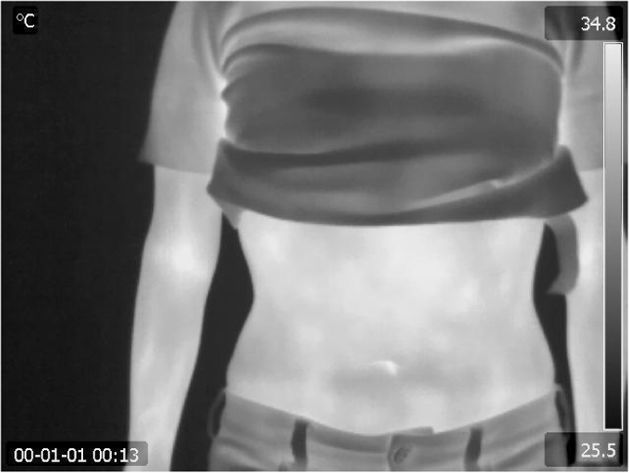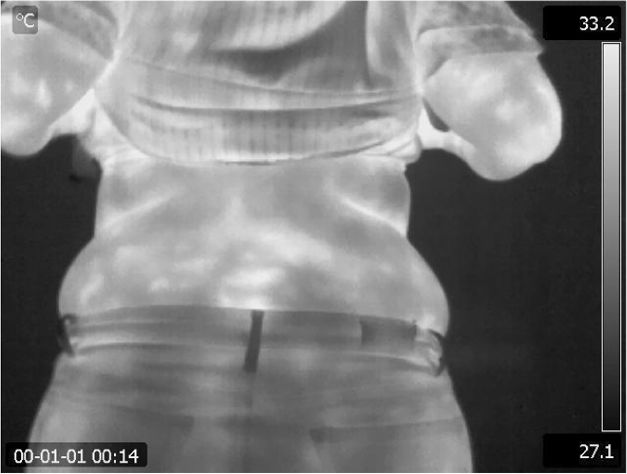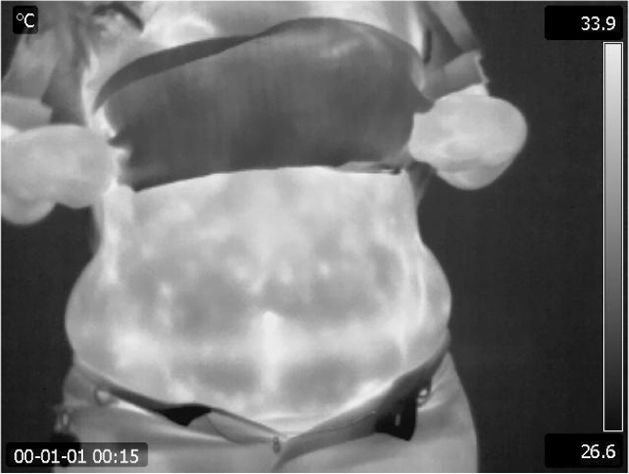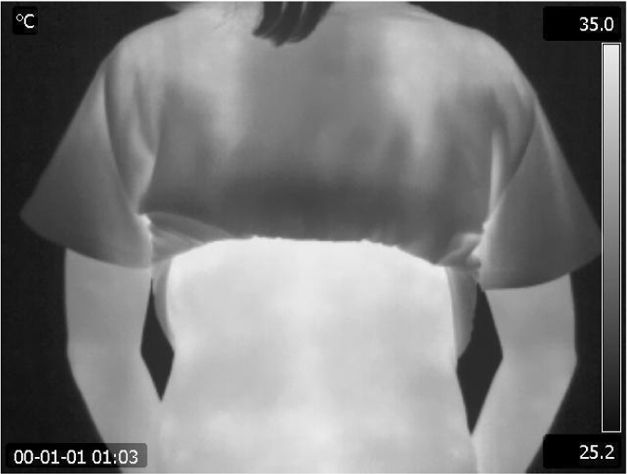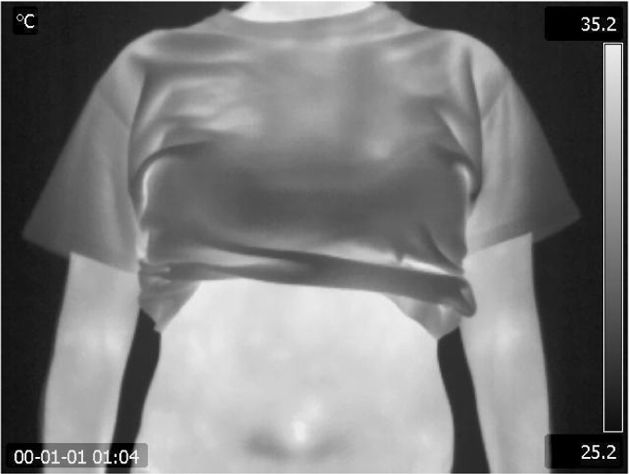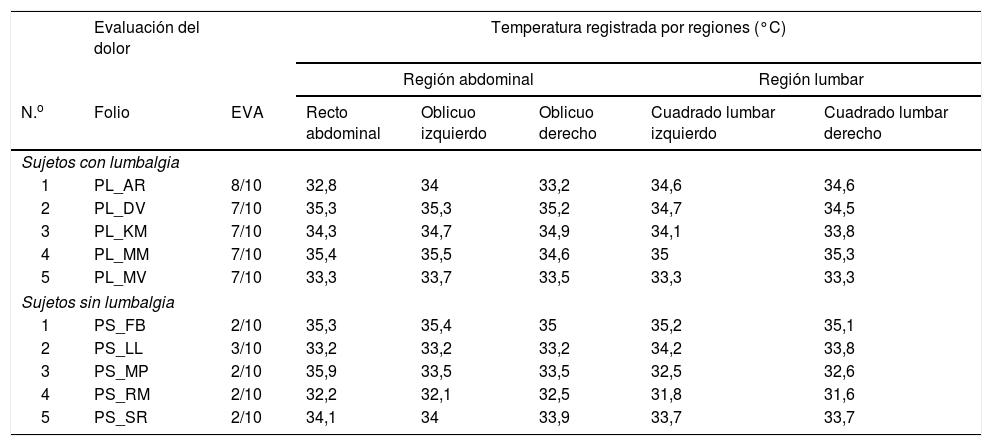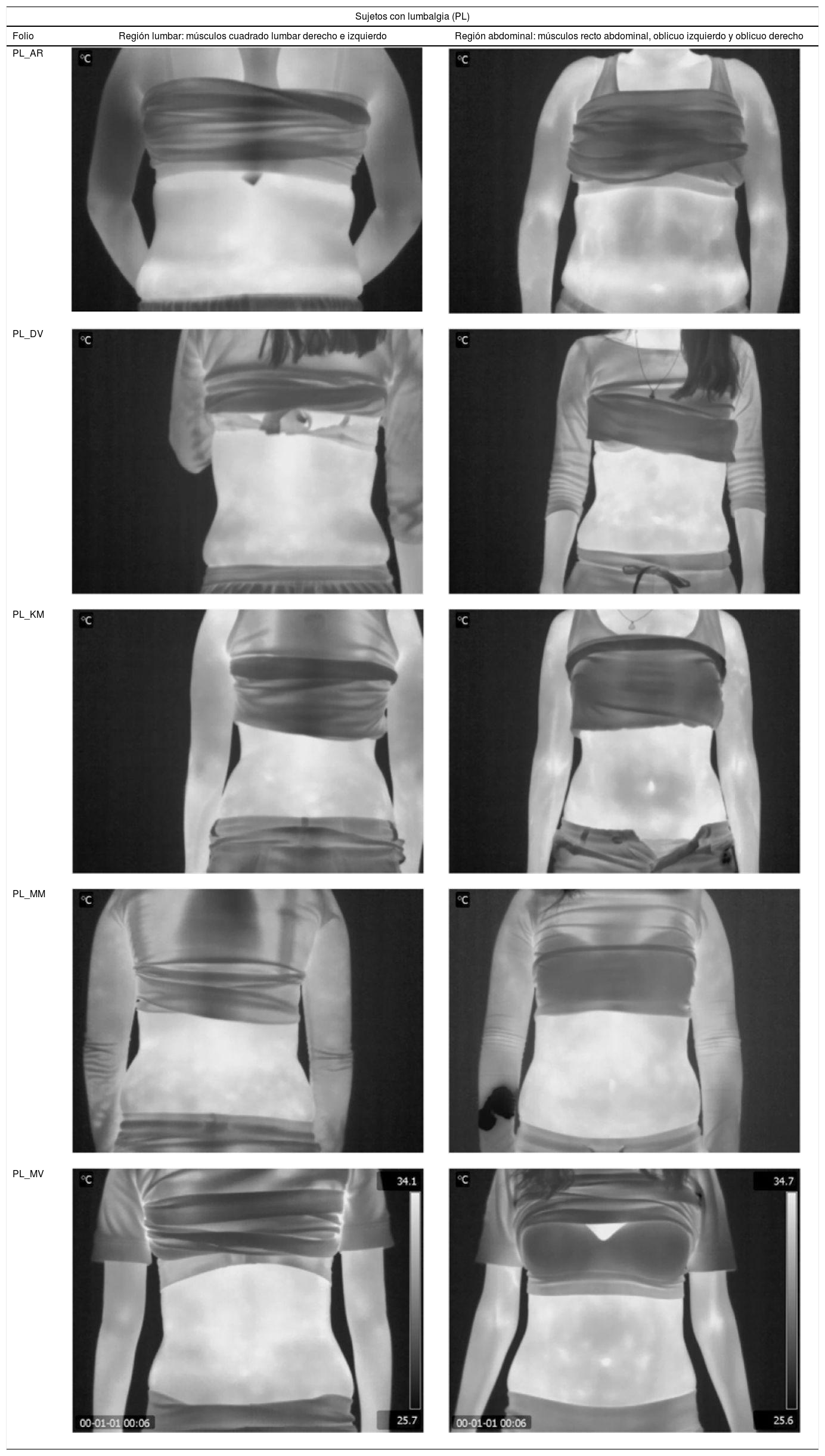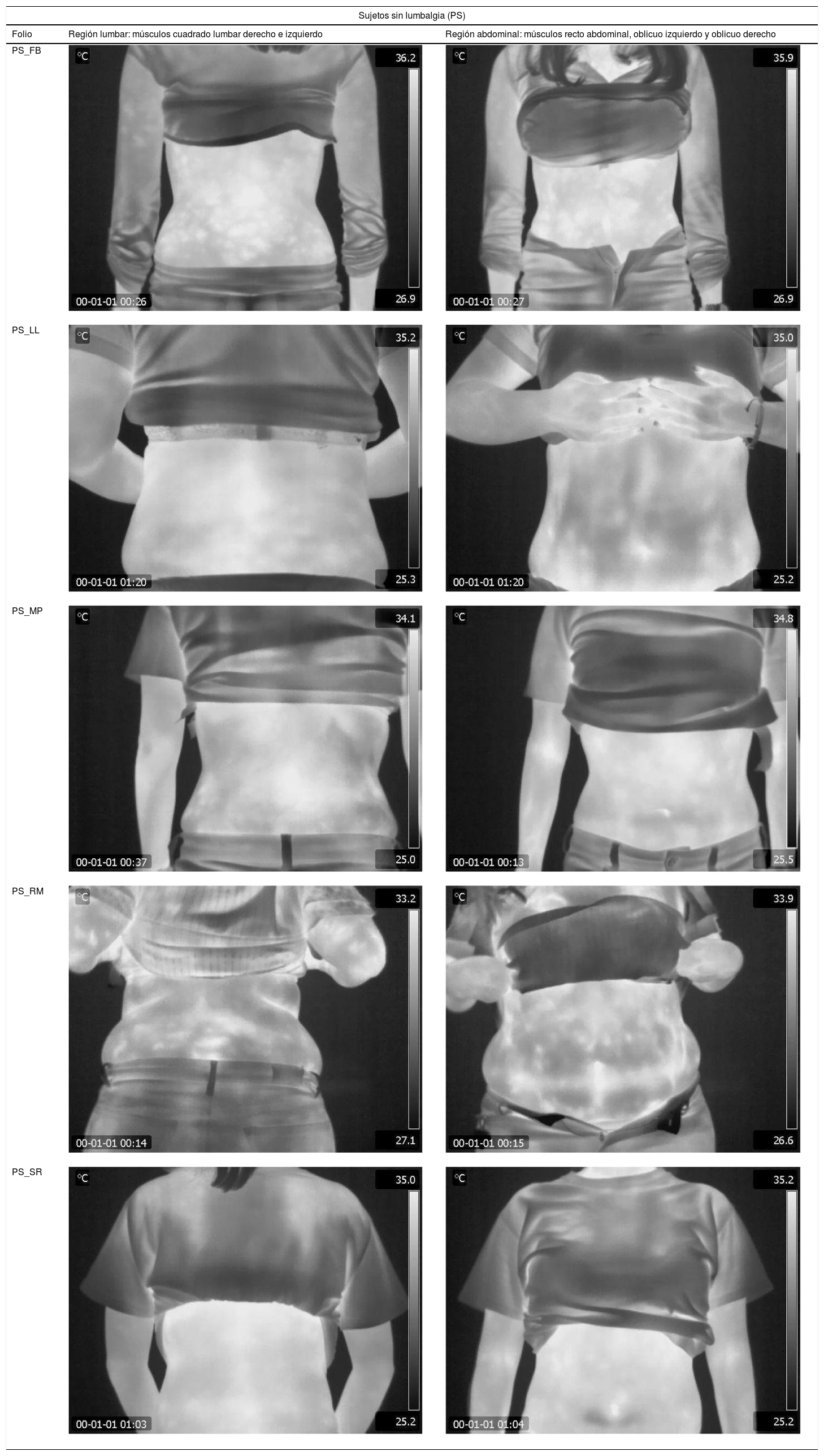El manejo del dolor es un tema importante de abordaje fisioterapéutico. La lumbalgia es una de las principales causas de dolor y discapacidad en el mundo, por lo que se abordó su estudio utilizando la termografía como herramienta de imagen para la evaluación objetiva y EVA para su valoración subjetiva.
ObjetivoDescribir la correlación entre sujetos con lumbalgia (PL) y sujetos sin lumbalgia (PS) utilizando como variables la sensación subjetiva de dolor y valores termográficos.
Material y métodosSe realizó un estudio correlacional donde se evaluaron 10 sujetos divididos en 2 grupos, un grupo de sujetos con lumbalgia y un grupo sin lumbalgia. Se obtuvo la temperatura en grados centígrados de las regiones de interés de los termogramas, la cual se correlacionó con la calificación del dolor establecida por los sujetos inicialmente.
ResultadosLa totalidad de sujetos sin lumbalgia no evidenció variaciones anormales de temperatura, mostrando una musculatura sana. Por el contrario, 2 sujetos con lumbalgia mostraron variaciones térmicas anormales, indicio de probable daño muscular. Los otros 3 sujetos no presentaron relación entre el dolor y la respuesta termográfica obtenida.
ConclusionesLa relación dolor-termografía mostró una correlación de Pearson negativa para la región abdominal y positiva muy baja para la región lumbar, con un índice de significación estadística mayor de 0,05 (IC), por lo cual en este estudio no se encontró relación entre el índice de dolor y la temperatura por regiones musculares. La termografía infrarroja demostró ser una herramienta capaz de detectar, en tiempo real, alteraciones térmicas que presentan las zonas anatómicas potencialmente lesionadas.
Pain management is an important issue in a physiotherapeutic approach. Low back pain is one of the main causes of pain and disability in the world, and therefore we studied it using thermography as an imaging tool for objective evaluation and the visual analogue scale for subjective evaluation.
ObjectiveTo describe the correlation between subjects with low back pain (PL) and subjects without low back pain (PS) using the subjective sensation of pain and thermographic values as variables.
Material and methodsA correlational study was carried out, evaluating 10 subjects divided into two groups, a group of subjects with low back pain and a group without low back pain. The temperature was recorded in degrees Celsius, using thermograms and marking thermal points to evaluate each area, which was correlated with the pain rating initially established by the subjects.
ResultsThe subjects without low back pain did not show abnormal temperature variations, and showed healthy musculature. In contrast, 2 subjects with low back pain showed abnormal thermal variations, an indication of probable muscle damage. The other 3 subjects did not show a relationship between pain and thermographic response.
ConclusionsThe pain-thermography relationship showed a negative Pearson correlation for the abdominal region and an extremely low positive correlation for the lumbar region, with a statistical significance index greater than .05 (CI). Therefore, in this study no connection was found between pain index and temperature by muscle region. Infrared thermography proved to be a tool capable of detecting thermal alterations in real time, in potentially injured anatomical areas.
Artículo
Si ya tiene sus datos de acceso, clique aquí.
Si olvidó su clave de acceso puede recuperarla clicando aquí y seleccionando la opción "He olvidado mi contraseña".Comprando el artículo el PDF del mismo podrá ser descargado
Precio 19,34 €
Comprar ahora










